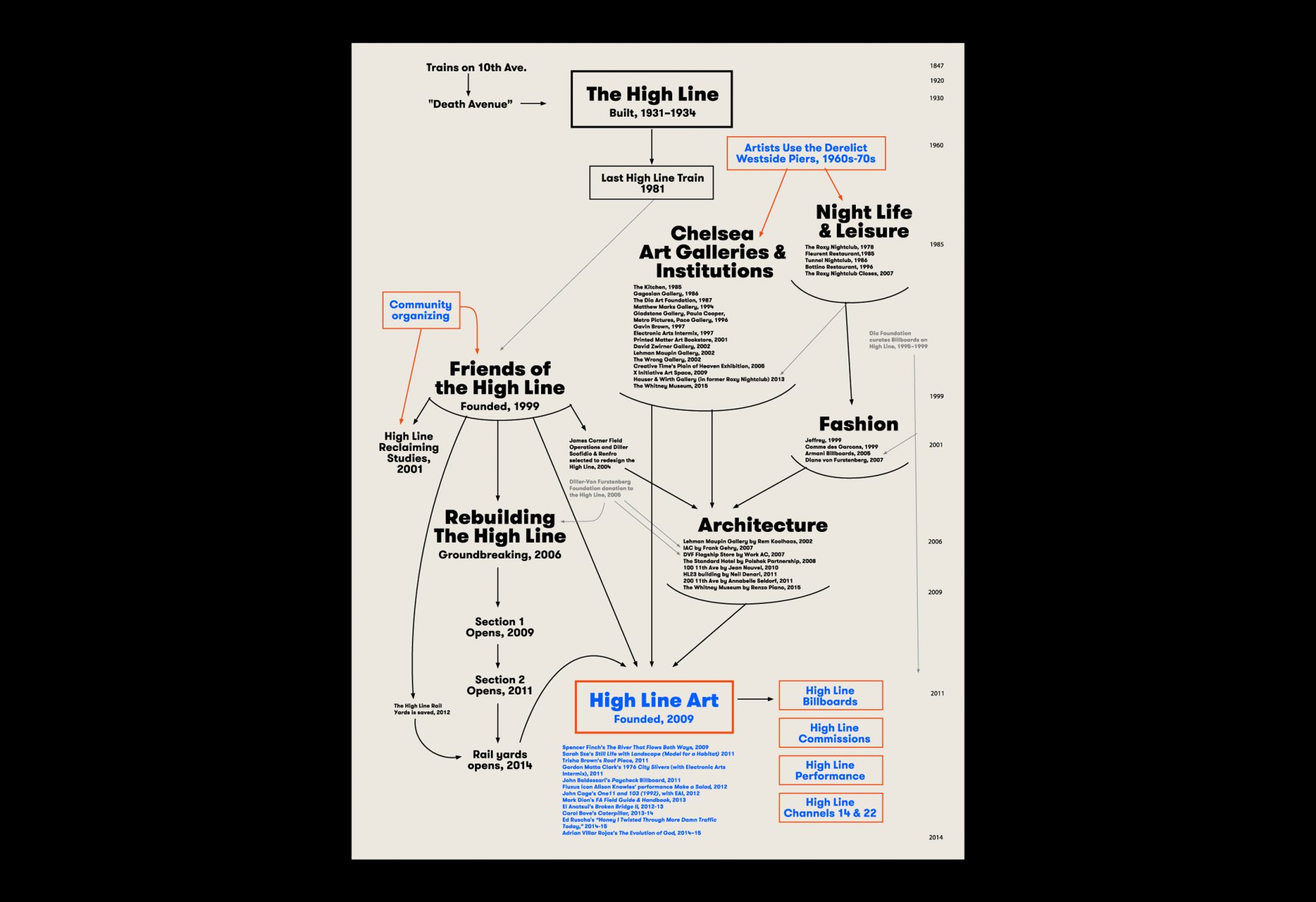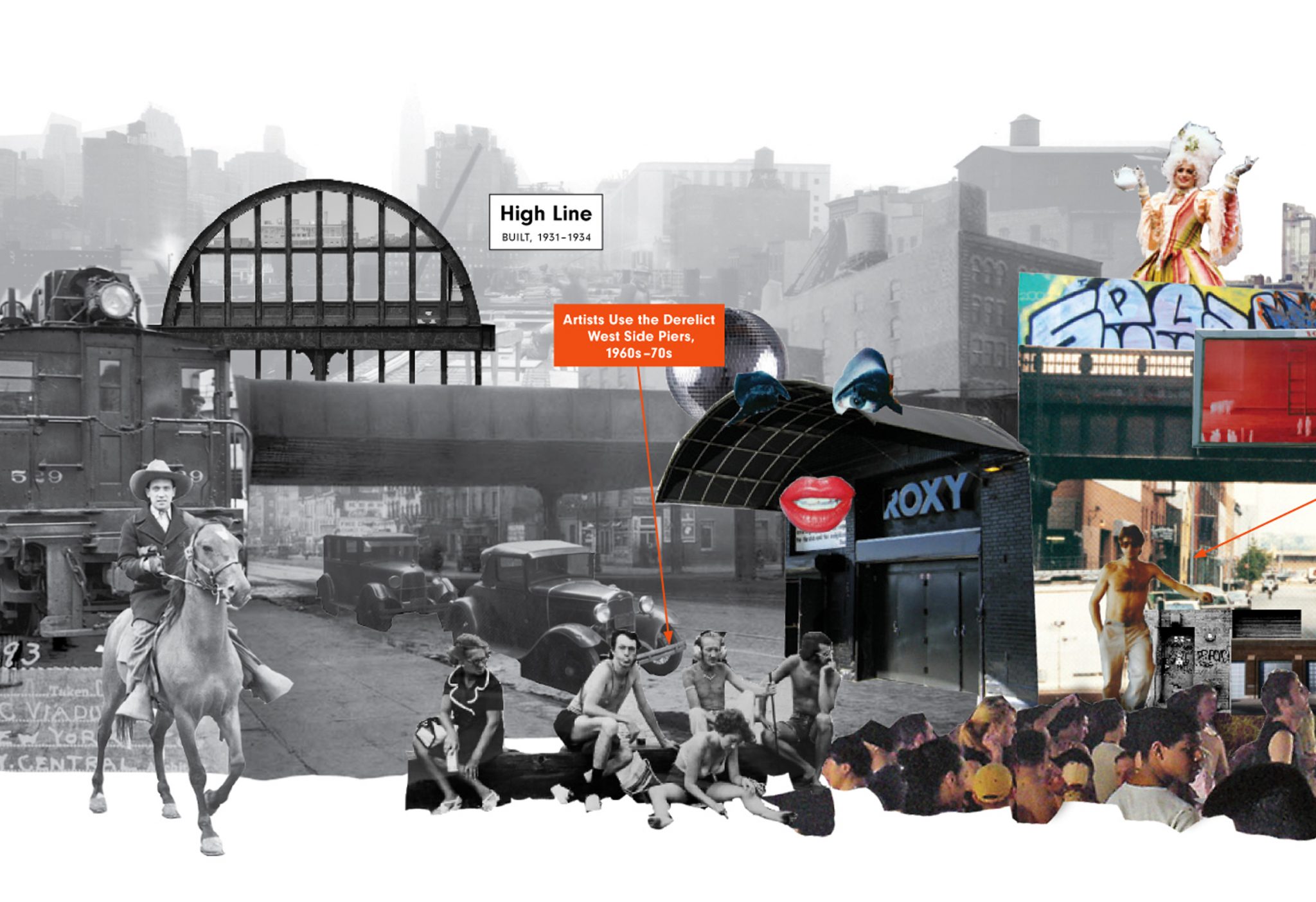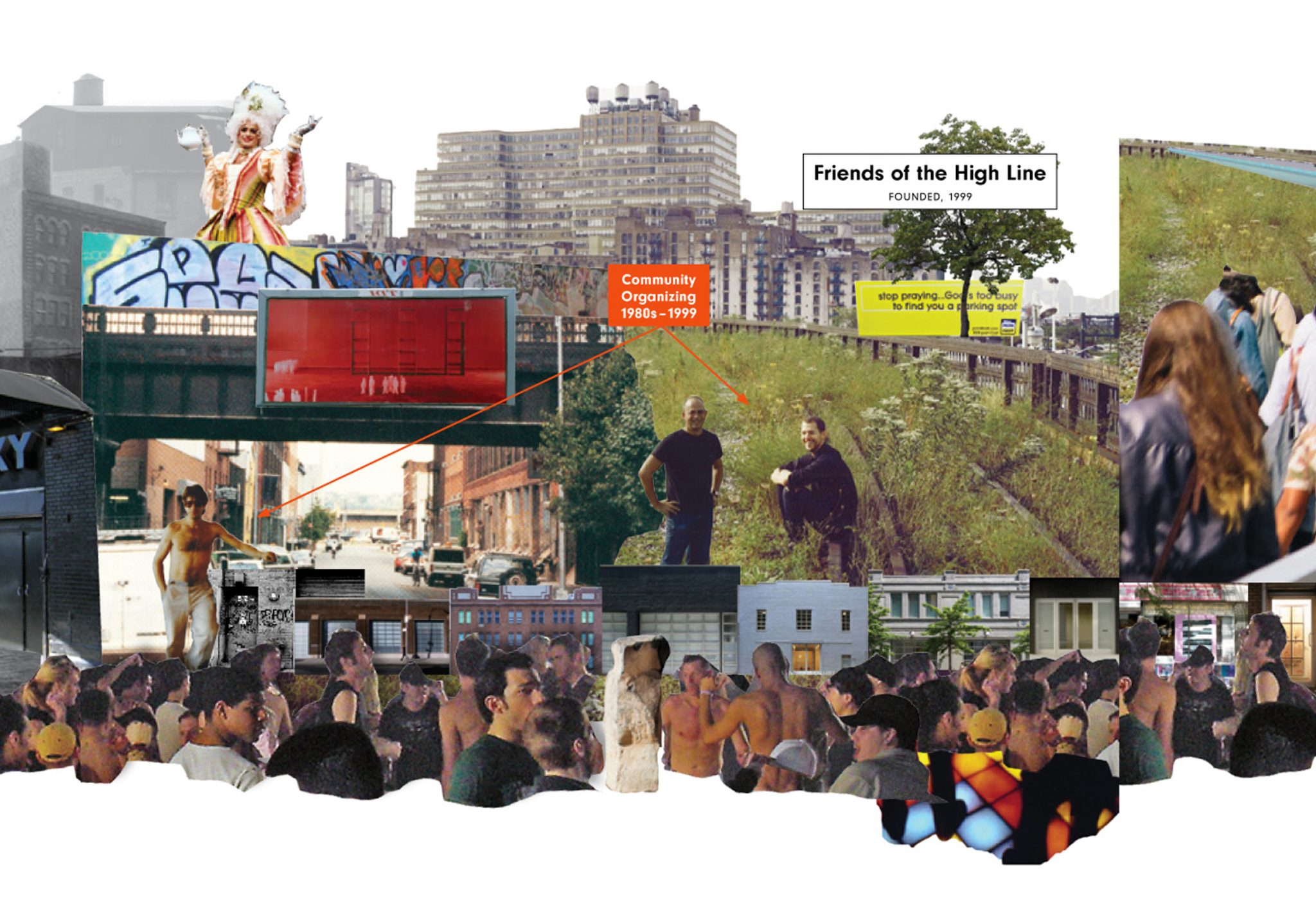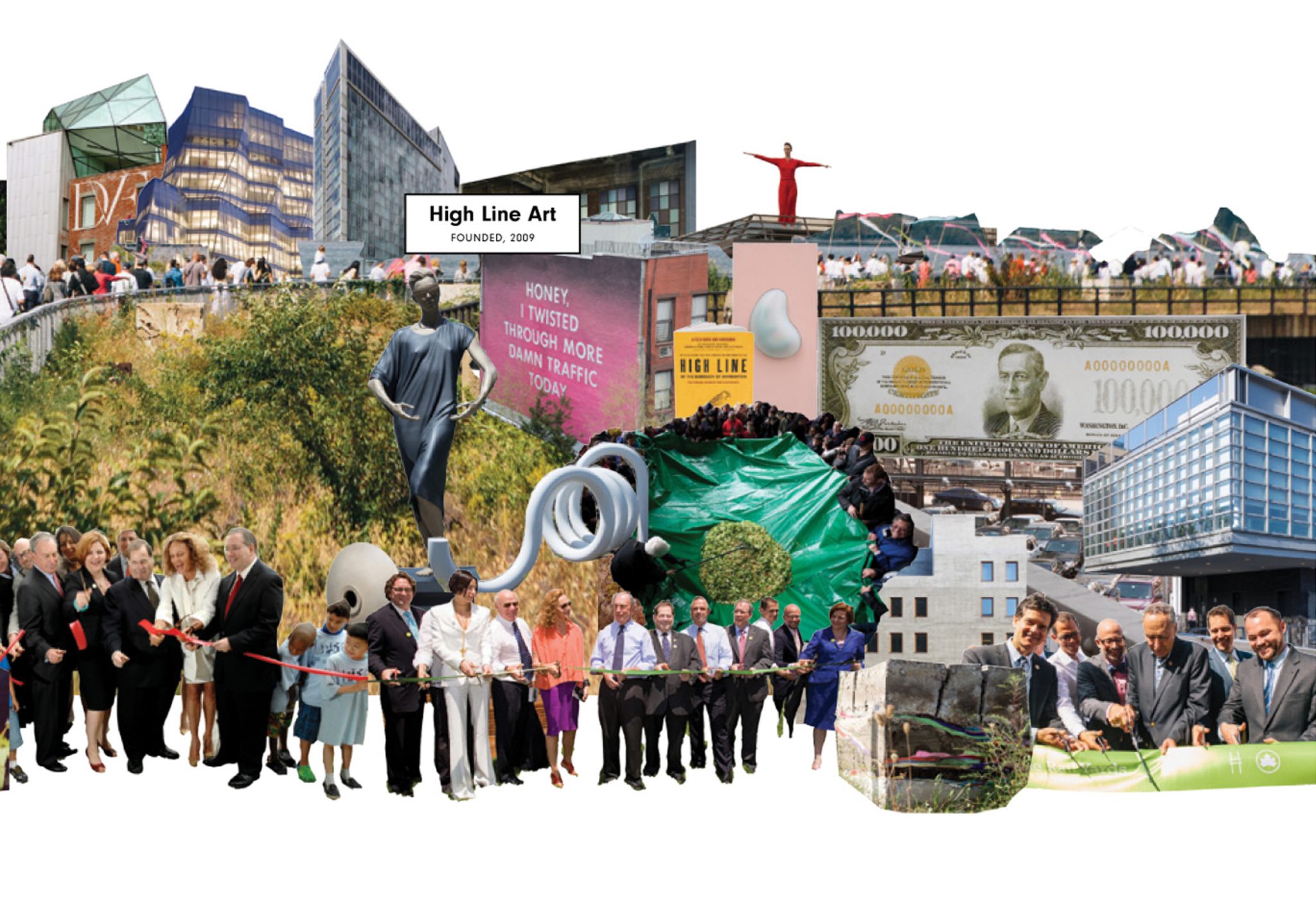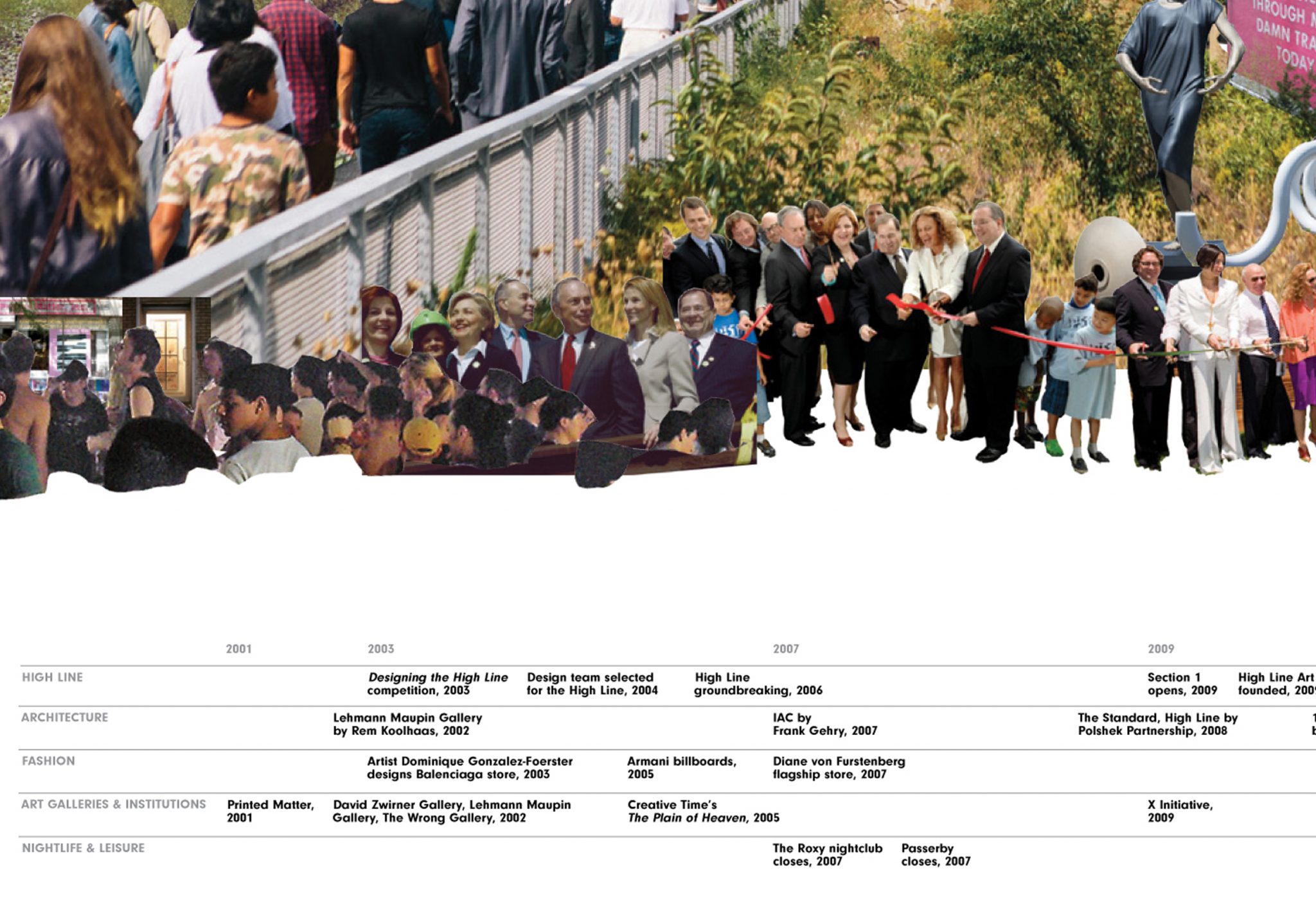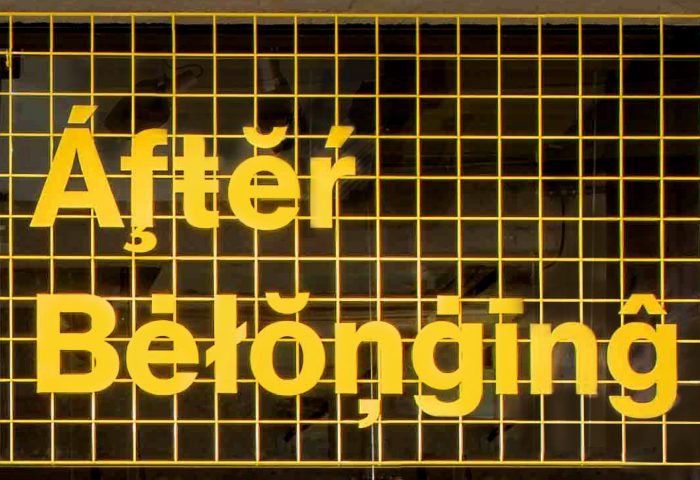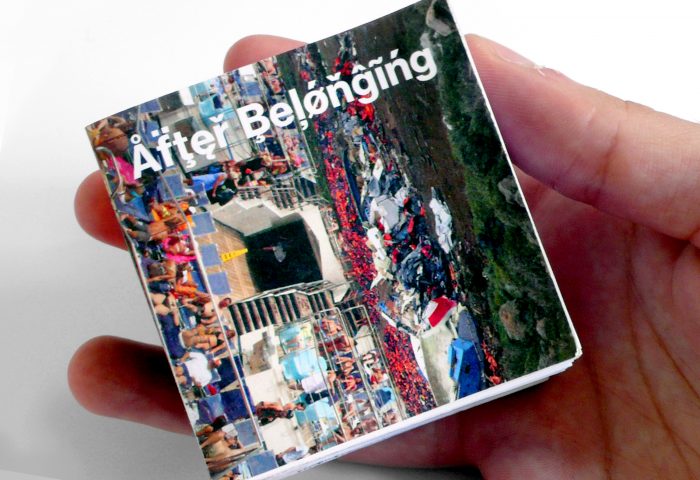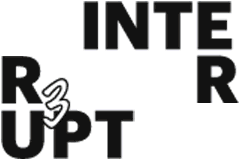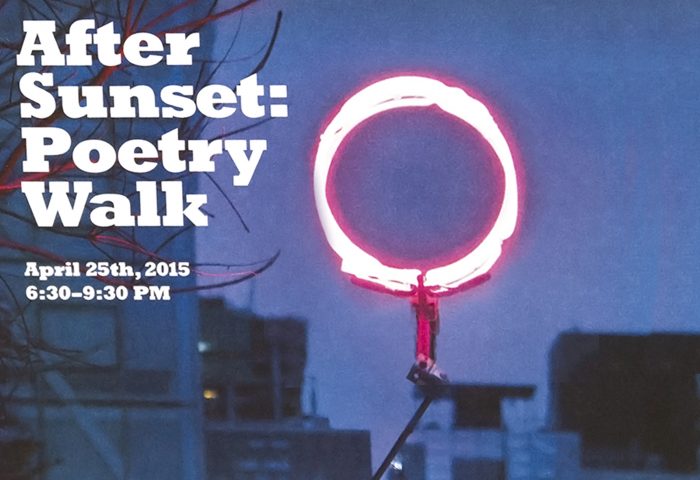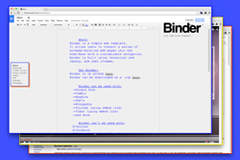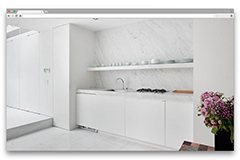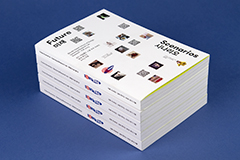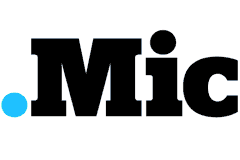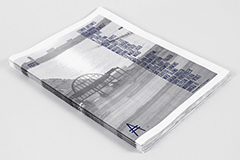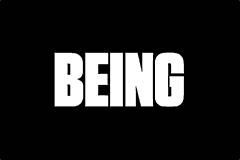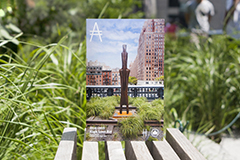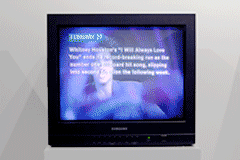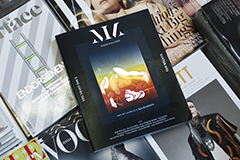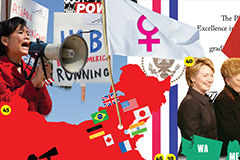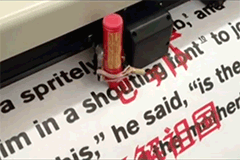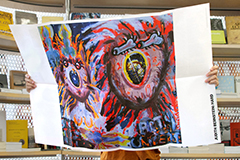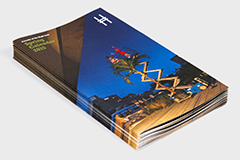High Line Art Timeline
High Line Art is a department within Friends of the High Line devoted to curating art along the length of this public space, including sculptures, video, and live performances. When High Line Art decided to publish a book called High Art, we were asked to create a timeline illustrating the history of the High Line and HLA’s place within that timeline.
To begin, we received a large volume of data about the history of the High Line and High Line Art. Our challenge was to tease a narrative out of this data and give the history a point of view, while also translating the data into a visual that would tell the story chronologically in a direct, interesting and accessible way.
Our minds first jumped to Alfred Barr’s diagram of Modern Art for inspiration. Barr created his diagram “Cubism and Modern Art” in 1936, and by naming various artistic movements connected through red or black arrows and placed along a chronology, he visually depicted how these movements related and influenced each other over a span of 45 years. We wondered, what if we sketched a similar diagram for the history of the High Line in order to see what narrative might emerge?
This experiment brought us to the key ideas behind the timeline we ended up creating: that art and the High Line are the perfect match, because art has always been at the heart of this public space. Initially an isolated area in the Meatpacking district of lower Manhattan, the abandoned railroad tracks were first only valued by experimental artists and other fringe communities who challenged the norms of society. They were the seeds of the High Line as we know it today, ultimately becoming a showcase for art institutions and a celebration of public space.
To illustrate these ideas, we decided to create a visual collage along a horizontal chronology starting with the original use of the tracks and ending with the High Line’s most recent and high-profile supporters, openings and events. The timeline is divided into thematic categories shown in parallel rows, with years at the top and pictures clustered above. In a way, the history of the High Line can be seen as a microcosm of the city itself: dazzling magnificence that has its roots in humble but fearless, imaginative outliers.
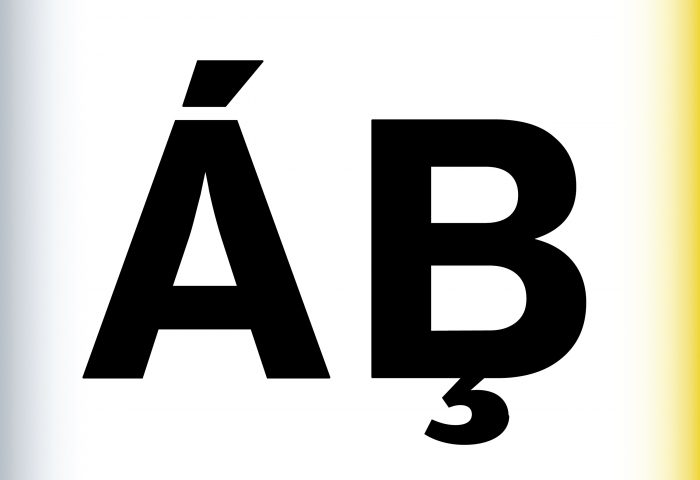
After Belonging: Identity
This is our work is a graphic design studio run by Megan Feehan and collaborators. Our work includes visual identities, publications, exhibitions, print collateral and interactive projects for architecture, art and miscellaneous institutions. We specialize in being design generalists, in not fetishizing technology over communication, and letting experiment and play guide form and format decisions.
Our design process incorporates research, analysis, and genuine curiosity to determine the best outcome with the most impact, whatever the format. Our aim for every project is to produce memorable, meaningful and intuitive communication design. We love the full spectrum of the process — embracing grand concepts and granular production specifications equally.
Our clients include the Oslo Architecture Triennale 2016, Rhode Island School of Design, New Museum for Contemporary Art, Storefront for Art and Architecture, Brown University, David Brooks Studio, Post-Office Architectes, On Stellar Rays Gallery, and Lauren Wegel Architect, amongst others. The studio was founded in New York City in 2013, and is based in lower Manhattan.
2015 © This is our work
